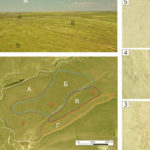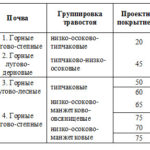UDC 631.48
Borisov A.V., Idrisov I.A., Pinskoy V.N., Potapova A., Bukhonov A.V., Yeltsov M.V. THE STRUCTURE OF SOIL COVER AND SOIL PROPERTIES OF DRY STEPPE PASTURES UNDER DIFFERENT GRAZING INTENSITY // Arid Ecosystems. 2023. Vol. 29. № 3 (96). P. 131-140. | PDF
The features of the soil cover in different parts of the pasture in the conditions of a dissected relief were carried out. The object of the study was an average sheep farm in the dry steppe zone in the Manych river basin. It has been established that, depending on the intensity of grazing, several types of soil cover can be distinguished on the pasture. In turn, the intensity of grazing is determined by the composition of the vegetation. As a result, the heterogeneity of the soil cover is due to the distance from the farm, as well as the peculiarities of the vegetation cover in different parts of the pasture. The greatest pasture load occurs in areas where the soil cover has a high proportion of Solonetzes with cereal-wormwood plant associations. A tendency towards a reduction in the thickness of the AJ and SEL horizons of Kastanozems and Solonetzes was noted as the pasture load intensified. In areas with feather grass, the share of Solonetzes in the soil cover is much lower, and Kastanzems predominate. As the pasture load increases, the share of Kastanozems may decrease and the area of Solonetzes may expand.
Keywords: steppe, pastures, phytocenoses, cattle grazing, soils, saline process, erosion.
Financing. The work was supported by the Russian Science Foundation, grant No. 22-68-00010 “Paleoecology and Paleoeconomics of the Ancient Population of Crimea: Economic Models in Changing Natural Conditions and the Contribution of Ancient Anthropogenic Activity to the Formation of the Modern Soil Cover of the Region”.
DOI: 10.24412/1993-3916-2023-3-131-140
EDN: CRLAES





